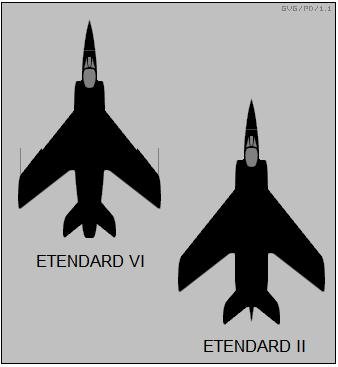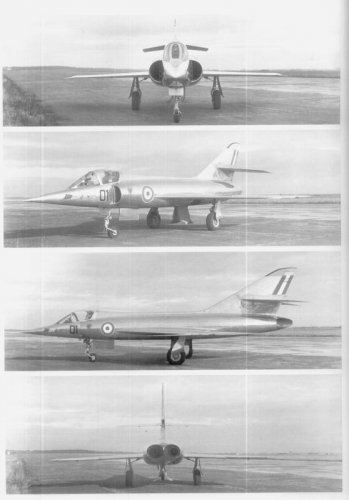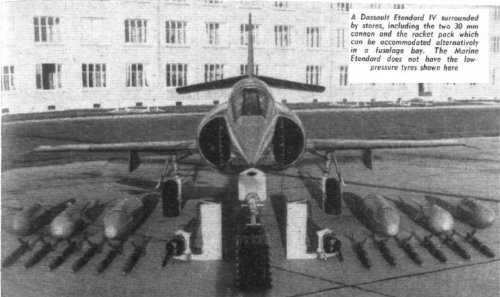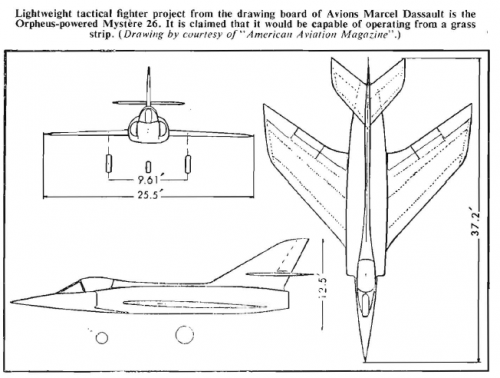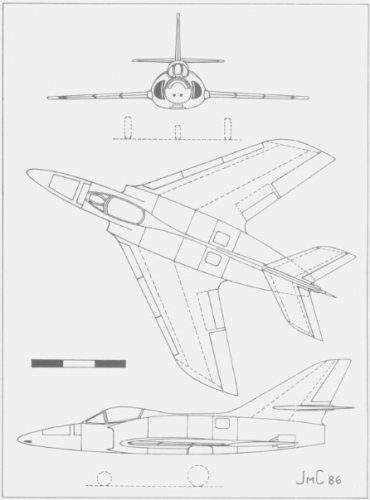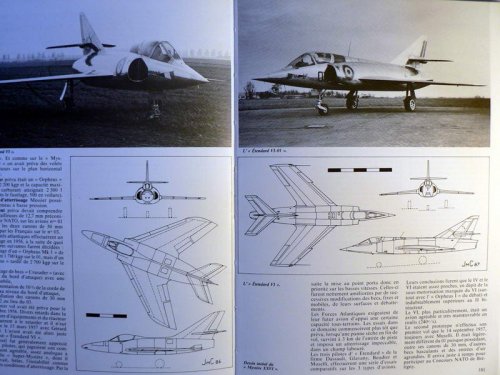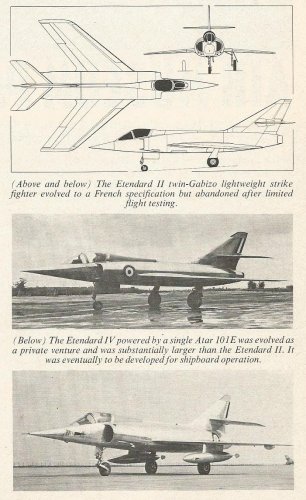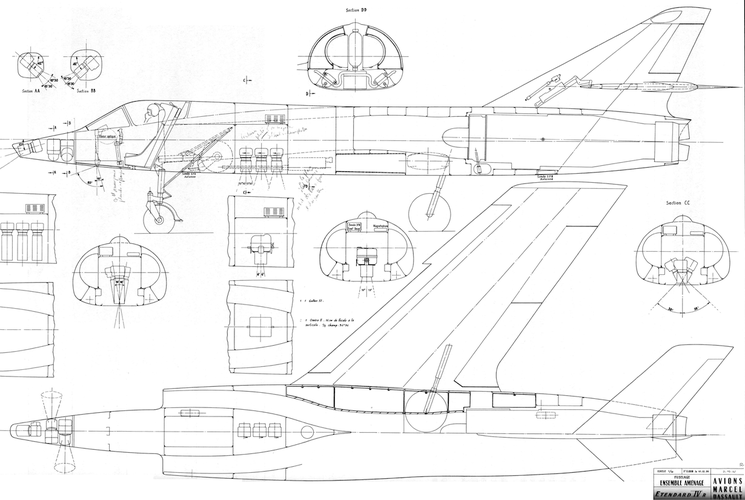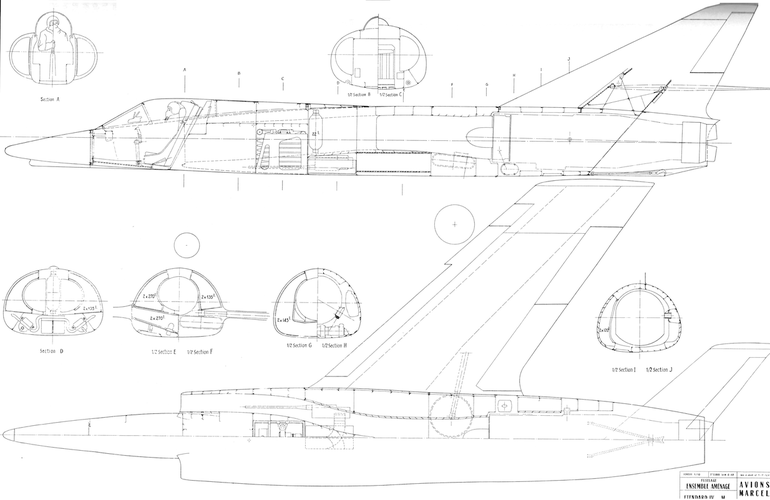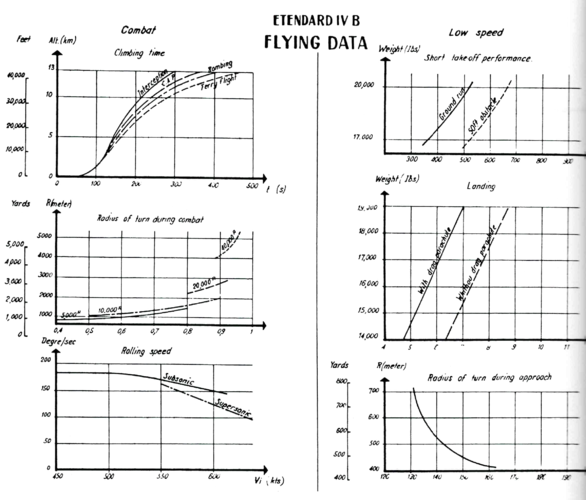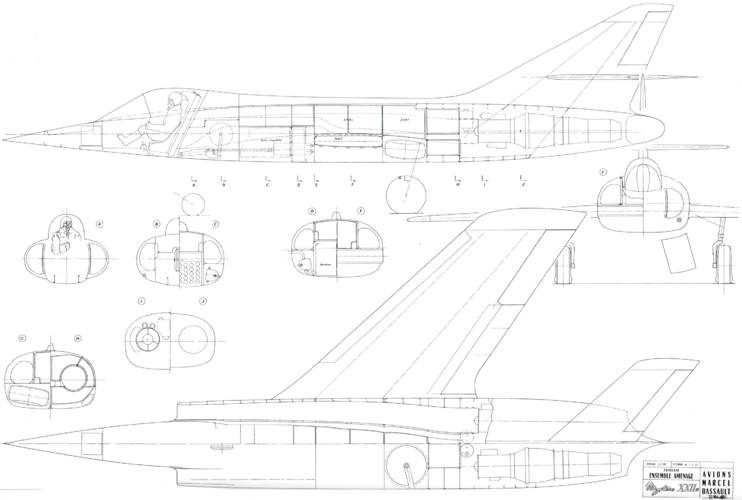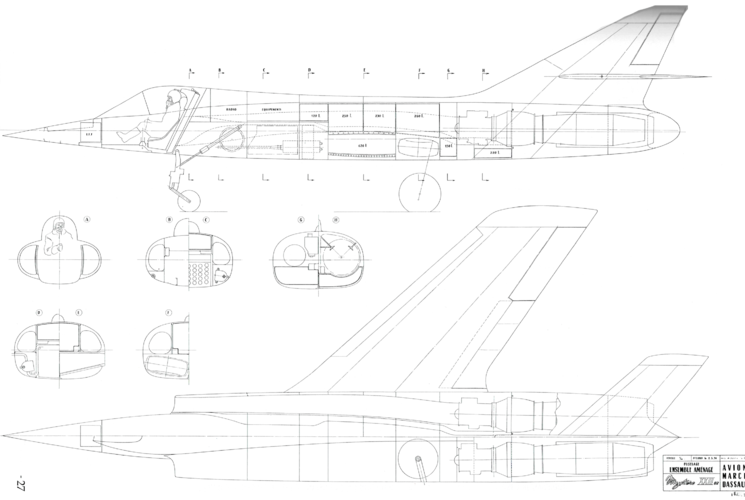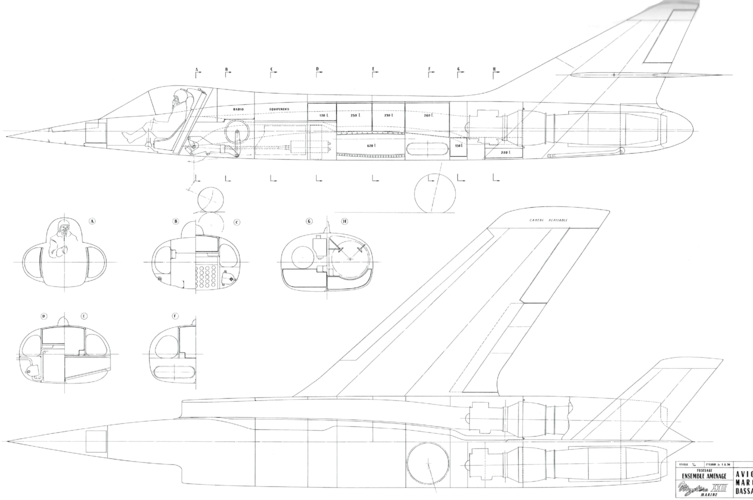The Mystere 22 ordered by the French Government and the Mystere 26 ordered by NATO had virtually identical air-frames, differing only in the power plants installed, the " 22 " having two turbojets located in the fuselage side-by-side with a paired exhaust, and the " 26 " having a single 4,520 lb. thrust Bristol Orpheus B.Or.2 turbojet. The Mystere 22.01 would eventually be powered by two Turbo-meca Gabizo units which would provide a total maximum thrust of 4,840 lb. and a total maximum cruising thrust of 3,880 lb., but initial flight tests were likely to be conducted late 1956 with two 1,640 thrust Dassault M.D.30 (licence-built A.S. Vipers) installed. The Mystere 22-02 would receive either two R.800 or two R.105 Vesta turbojets for comparative trials, and the third machine -the Mystere 22M- would be a deck-landing variant with A- frame arrester hook, long-stroke under-carriage, catapult spools, etc., in which Aeronavale evinced some interest.
A family resemblance to the larger Mystere fighters can be seen in the wing and tail geometry which is common to both Mysteres 22 and 26. The entire nose section of the fuselage, including the cockpit, is identical on both machines. The wing is swept 45° at quarter chord, has a thickness/chord ratio of six per cent and a span of 25 ft. 4 3/4 in. Overall length and height are 37 ft. 2 in. and 12 ft. 5 1/2 in. respectively. Armament comprises a pair of 30mm. French-built DEFA revolver cannon, similar to the British Aden gun, which are combined with the ammunition (120 rounds per gun) in a detachable pack, which can be winched in and out of the fuselage. Avions Marcel Dassault proposed to augment this armament in the case of the Mystere 22 with an internal rocket missile tray. This tray would project the firing and will be expendable so that it will be unnecessary to retract the tray after firing the salvos of rockets. Owing to the use of two turbojets, the Mystere 22 was somewhat heavier than the Mystere 26, the maximum loaded weight of the latter being some 9,000-10,000 pounds. Both machines carried underwing loads comprising two 500 lb. bombs and twelve 3 in. rocket projectiles, or alternative ordnance loads. The Mystere 24, incidentally, was a projected experimental variant of the basic design with a SNECMA Atar 101G engine.


